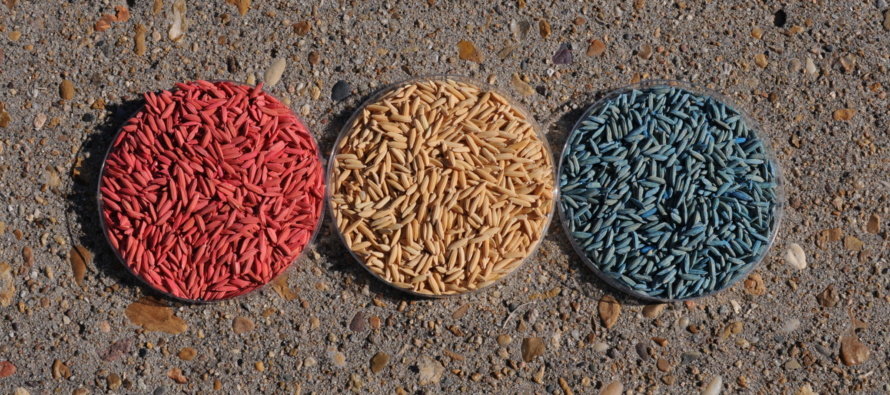Impact of Rainfall on Insecticide Seed Treatments in Rice

Related Articles
- Rice Variety Trial Results For 2010, Plus Rice Research Report 0
- Rice Seeding Rate Calculator and Chart 0
- Mississippi Cotton Insect Situation of 2010: A Look Back 3
Latest Tweets
The 2019 planting season has gotten off to a rough start with all of the rain. Today (Thursday May 9), we have gotten well over 4 inches of rain in the last 24 hours in Stoneville and a lot of the Delta has gotten similar amounts. As a result, a lot of fields have standing water in them right now or have had a lot of water pass across them over the last couple of hours. As most of you know, we recommend an insecticide seed treatment for rice water weevil control in Mississippi.
The challenge with most insecticide seed treatments in rice is that they have to provide control when the field goes to flood. Also, the insecticides used as seed treatments in rice vary in their water solubility. In general, the neonicotinoids (Cruiser and Nipsit) are more water soluble than the diamides (Dermacor and Fortenza). All of that means that excess water in the field before the field is flooded can affect their performance and affect it differently depending on the seed treatment. In general, the impact on neonicotinoids will be greater than the impact on diamides.
We don’t have data showing the impact of rainfall on insecticide seed treatments in rice, but we did have a graduate student (Dr. Andrew Adams) evaluate the impact of flushing rice fields. Given the amounts of rainfall that we are currently experiencing, the results will most likely apply to the rice that has already been planted this year.
 This graph shows the impact of one or two flushes on the efficacy of Cruiser, Dermacor, and Nipsit. The rice water weevil numbers showed a similar response as the yields, so we are just showing the yield data. As you can see, all of the seed treatments performed well compared to the untreated control (black bars) where we did not flush the field and where we only flushed it one time. However, when we flushed the field multiple times, the efficacy of Cruiser and Nipsit was compromised and rough rice yields were no better than the untreated control. Dermacor still maintained rice yields better than the untreated control because of the lower water solubility. We did not have the new insecticide Fortenza in this test because it was done several years ago, but it would probably be similar to Dermacor since they are in the same class.
This graph shows the impact of one or two flushes on the efficacy of Cruiser, Dermacor, and Nipsit. The rice water weevil numbers showed a similar response as the yields, so we are just showing the yield data. As you can see, all of the seed treatments performed well compared to the untreated control (black bars) where we did not flush the field and where we only flushed it one time. However, when we flushed the field multiple times, the efficacy of Cruiser and Nipsit was compromised and rough rice yields were no better than the untreated control. Dermacor still maintained rice yields better than the untreated control because of the lower water solubility. We did not have the new insecticide Fortenza in this test because it was done several years ago, but it would probably be similar to Dermacor since they are in the same class.
As a side note, my counterparts in Louisiana have told me that Fortenza does not provide the same level of residual control as Dermacor for stalk borers, so there may be some minor differences in the impact of rainfall. I would still expect Fortenza to be much better than the neonicotinoids for rice water weevil control in this situation.
Finally, there is little that can be done right now to address this, but we wanted to make everyone aware that we could potentially need supplemental control for rice water weevil in the rice that has already been planted. It will be important to scout fields closely during the first week they are flooded. If you start seeing significant numbers of weevil adults and feeding scars, you may need to make a foliar spray to control the adults before they start laying eggs. The feeding scars are an important component of that because they provide an indication that the seed treatment has been compromised.




Let me tell You a sad story ! There are no comments yet, but You can be first one to comment this article.
Write a comment